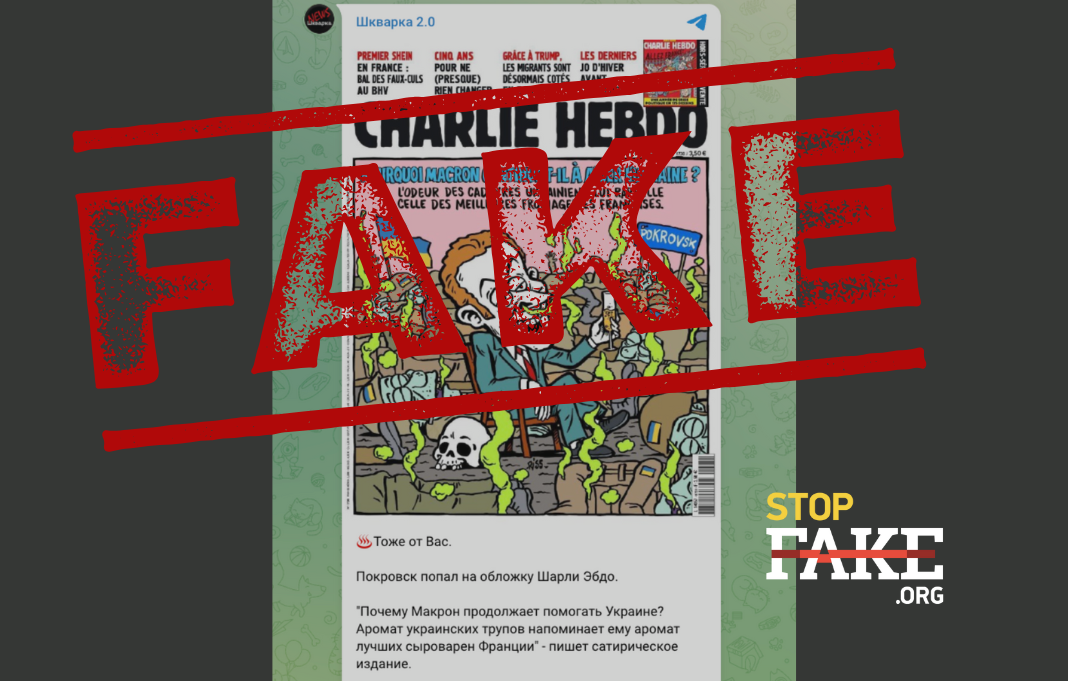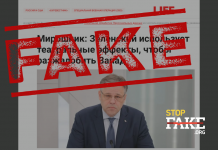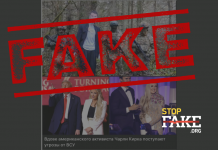The covers are entirely fabricated; the French magazine has never published the cartoons in question.
Social media users have circulated a bogus cover purportedly from the French satirical weekly Charlie Hebdo, featuring President Emmanuel Macron. The fabricated image depicts Macron perched on a battlefield in Pokrovsk, glass of sparkling wine in hand, «enjoying» the carnage among fallen Ukrainian soldiers.
The fabricated cover carries a crude caption: «Why does Macron keep helping Ukraine? The scent of Ukrainian corpses reminds him of the aroma of France’s finest cheese cellars.»

But the cover itself is a fabrication. Charlie Hebdo never published — or even sketched — anything resembling this caricature.
All recent issues are available on the magazine’s official website, and none feature a Macron-themed cover. The real edition, dated November 5 — not November 6 — focused on an unrelated investigation into the online retailer Shein and the trade in child-like sex dolls.
Moreover, a side-by-side look makes the fabrication even clearer: Charlie Hebdo consistently prints the issue number and date on the left side of the cover, while the fake version shifts both elements to the right — a telltale break from the magazine’s standard layout.
According to the monitoring service Osavul, the bogus cover first surfaced on November 6 on the pro-Kremlin Telegram channel Respublika Odessa. The post was calibrated to push a familiar Kremlin talking point — that Western military and financial support is needlessly dragging out the war rather than helping end it.
Russian propagandists didn’t stop at a single fabrication. They circulated yet another bogus Charlie Hebdo cover, this one riffing on the fighting for Pokrovsk. The image casts Ukraine’s Commander-in-Chief Oleksandr Syrskyi as a chef presenting President Volodymyr Zelenskyy with a grisly piece of «Ukrainian barbecue» — a soldier’s severed head.

Charlie Hebdo’s official archive contains no issue No. 1739 dated November 7, 2025 — the edition referenced in the circulating fake. Analysis indicates the image was digitally fabricated, likely using photo-editing software or AI tools.

Russian propaganda frequently fabricates covers of prominent publications — including Charlie Hebdo, The Economist, and Time — to lend credibility to its messaging and provoke emotional reactions. By exploiting recognizable media brands, these fakes aim to suggest that Western outlets share anti-Ukrainian positions, reinforcing narratives that aid to Kyiv is futile and that the West acts cynically.
Previously, StopFake debunked another fabricated Charlie Hebdo cover portraying President Zelenskyy as Quasimodo in front of Notre-Dame Cathedral.





